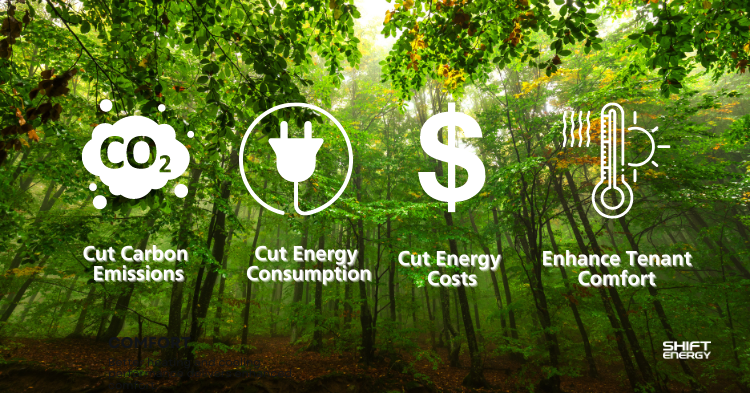SHIFT team members recently attended the “ESG in CRE” course offered by REALPAC. Over three jam-packed days, we dug in deep on emerging trends in Environment, Social and Governance (ESG) in the commercial real estate (CRE) sector.
Of course, there are those who are opposed to ESG measures, claiming that businesses only job is to maximize shareholder value while obeying the letter of the law. They push back against voluntary sustainability and diversity initiatives, arguing it is the government’s job, not their’s, to regulate business and advance environmental and social progress.
While there is an element of logic to this argument, it ignores the reality that ESG initiatives are actually good for business. They can cut costs and drive new levels of profitability. The fact of the matter is this: ESG should not be ideological.
Rather, it represents, as REALPAC explained it, an opportunity to create value.
At SHIFT, we are focused on creating that value by helping large facilities reduce energy consumption and cut carbon emissions. We often talk about addressing the “four Cs” – consumption, carbon, cost and comfort. Our energy management solution cuts energy consumption, lowering both carbon emissions and cost without any impact on occupant comfort. And we do it by maximizing the performance of existing systems and HVAC equipment, helping facility owners and operators get the most out of their investment.
Bottom Line Benefits
Cutting energy consumption adds directly to the bottom line by reducing operating costs.
Heating and cooling are often one of the largest operating costs in any facility. Larger facilities are usually managed with a “Building Automation Systems” or “Building Management System”. These systems have been around for decades, and they generally do a pretty good job on maintaining a consistent temperature in a building.
But they are not engineered to maximize performance which means that consistency comes with a price tag in the form of higher energy costs, higher emissions, and increased wear and tear on HVAC equipment. Using a Machine Learning-powered energy management platform delivers greater efficiency in heating and cooling without requiring expensive new equipment, and that efficiency leads directly to lower operating costs.
Of course, there are other bottom-line benefits to sustainability beyond reducing operating costs. Buildings with low carbon footprints and high energy efficiency tend to have higher market values. Many real estate investors screen for sustainability but not for purely altruistic reasons – being more environmental responsible is a good business practice and protects their investment from new regulatory changes that will force decarbonization initiatives on many existing buildings.
Potential tenants also increasingly prioritize sustainability, and having an environmentally friendly building can attract a broader pool of interested parties and often command higher lease rates and property valuations.

Regulation is Coming
Governments and municipalities around the world are implementing stricter energy efficiency and emissions regulations in the built environment, like New York City’s Local Law 97 or Boston’s BERDO. By proactively cutting carbon emissions, building owners and managers can ensure compliance with current and future regulations, avoiding potential fines and penalties which could raise a building’s operating budget substantially if not proactively managed.
By taking steps now to curb carbon emissions, building owners and operators are also curbing risk. As climate change concerns grow, there is an increasing focus on assessing and mitigating climate-related risks. Buildings that are designed and operated with low carbon emissions are more resilient to potential regulatory changes, market shifts, and physical risks associated with climate change, such as extreme weather events or rising energy prices.
At the end of the day, cutting carbon emissions in large buildings aligns economic and environmental interests. It can generate substantial cost savings, enhance market value, improve reputation, reduce risks, and provide a competitive advantage in an increasingly sustainability-focused business landscape.
Want to quickly cut carbon emissions and energy consumption in your building without expensive new equipment? Let’s chat.

